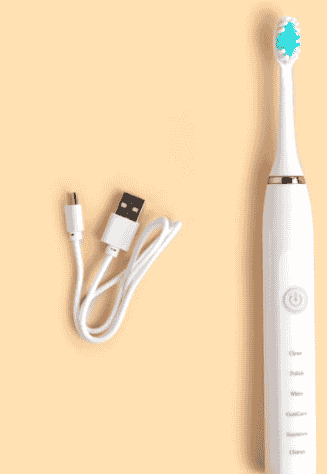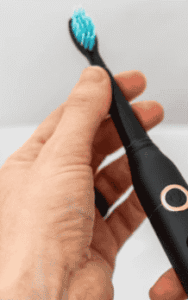 Electric Toothbrush: Revolutionizing Oral Care in the Digital Age
Electric Toothbrush: Revolutionizing Oral Care in the Digital Age
Brushing our teeth is one of the most essential daily habits we practice, but for years it remained unchanged—until technology stepped in. The invention of the electric toothbrush has transformed oral hygiene, offering a smarter, more efficient, and even enjoyable way to maintain healthy teeth and gums. From its origins to its modern innovations, the electric toothbrush is more than just a gadget; it’s a game-changer for dental health.
In this blog, we’ll explore everything you need to know about electric toothbrushes: their history, benefits, types, how to choose the right one, and even their environmental impact.
A Brief History of the Electric Toothbrush
The electric toothbrush was invented in 1954 by Dr. Philippe-Guy Woog in Switzerland. Initially designed for people with limited motor skills or orthodontic appliances
, it soon found a broader market. The first mass-produced electric toothbrush appeared in the U.S. in the 1960s under the name “Broxodent.”
Over the decades, electric toothbrushes evolved from bulky, corded devices to sleek, battery-operated, and now even AI-powered gadgets. Modern models come with features like pressure sensors, timers, Bluetooth connectivity, and mobile app integration—making them a true blend of health and technology.
Why Choose an Electric Toothbrush?
Many people ask: Is an electric toothbrush really better than a manual one? In short, yes—when used correctly. Here’s why:
1. Superior Plaque Removal
Numerous studies show that electric toothbrushes, particularly those with oscillating-rotating or sonic action, remove more plaque and reduce gingivitis more effectively than manual toothbrushes.
2. Built-in Timers
Most electric brushes come with a built-in two-minute timer, helping you brush for the dentist-recommended amount of time. Some even divide your mouth into quadrants and alert you every 30 seconds to switch areas.
3. Consistent Motion
Electric toothbrushes maintain consistent brushing motions that are difficult to replicate manually. This helps ensure even cleaning, especially in hard-to-reach areas.
4. Pressure Sensors
Brushing too hard can damage enamel and irritate gums. Many electric toothbrushes include pressure sensors that alert you when you’re pressing too hard, reducing the risk of gum damage.
5. Ideal for All Ages
Electric toothbrushes are great for children, the elderly, and individuals with limited dexterity. Their ease of use makes oral hygiene more accessible and effective for everyone.
Types of Electric Toothbrushes 
There are several types of electric toothbrushes available today, each with its own technology and benefits:
a. Oscillating-Rotating Brushes
These have small, round heads that rotate in one direction and then the other, often combined with a pulsating motion. They are effective at removing plaque and are typically found in Oral-B models.
b. Sonic Toothbrushes
These brushes vibrate at very high speeds, producing up to 40,000 strokes per minute. The vibrations also create fluid movement in the mouth, which helps clean between teeth and below the gumline. Philips Sonicare is a popular brand in this category.
c. Ultrasonic Toothbrushes
Using ultrasonic waves (beyond the range of human hearing), these toothbrushes clean by disrupting bacterial chains on a microscopic level. They are effective but generally more expensive and less common.
d. Children’s Electric Toothbrushes
Designed with smaller brush heads, softer bristles, and fun designs, these make brushing fun and engaging for kids. Some models even connect to mobile games that encourage proper brushing habits.
Features to Look for in an Electric Toothbrush
When choosing the right electric toothbrush, consider the following features:
-
Brush Head Size and Shape: Smaller heads can clean hard-to-reach areas better.
-
Battery Life: Look for a rechargeable toothbrush with a battery life of at least 7–14 days.
-
Smart Features: Bluetooth, app connectivity, and AI coaching can improve your brushing technique.
-
Replacement Head Avai lability: Ensure you can easily purchase and replace brush heads.
-
Water Resistance: Most models are waterproof, but always double-check before use.
READ THIS BLOG ALSO —Best Electronic Smartwatch of 2025
Environmental Impact of Electric Toothbrushes
Electric toothbrushes, while beneficial for oral health, can have an environmental impact if not managed responsibly. They contain electronic components, plastic parts, and rechargeable batteries, all of which can contribute to e-waste.
How to Reduce Environmental Impact:
-
Use Replaceable Heads: Choose models that let you change only the brush head instead of the entire unit.
-
Recycle Responsibly: Some manufacturers offer recycling programs. You can also drop off used brushes and heads at specialized recycling centers.
-
Choose Sustainable Brands: Look for companies using biodegradable materials or offering eco-friendly packaging.
-
Extend Product Life: Take good care of your brush and follow charging recommendations to extend its lifespan.
Manual vs. Electric Toothbrush: What Do Dentists Recommend?
Most dental professionals agree that the technique matters more than the tool itself. However, electric toothbrushes have proven to be particularly useful for:
-
People with gum disease
-
Individuals wearing braces
-
Children who resist brushing
-
Elderly users with arthritis
-
People who brush too aggressively
If you’re confident in your brushing skills and don’t have any special oral health concerns, a manual toothbrush may suffice. But for those looking for added ease, thoroughness, and technology-driven feedback, an electric toothbrush can be a game-changer.
Common Myths About Electric Toothbrushes
❌ Myth 1: They’re Too Expensive
Truth: Electric toothbrushes are available at various price points. Basic models can cost as little as $20–30, while premium ones can go above $150.
❌ Myth 2: They Damage Your Teeth
Truth: Using any toothbrush incorrectly can cause damage. Electric brushes with pressure sensors are designed to prevent this.
❌ Myth 3: Only Dentists Need Them
Truth: Electric toothbrushes are beneficial for everyone, not just people with specific oral health conditions.
Tips for Using an Electric Toothbrush Effectively
-
Don’t Scrub: Let the brush do the work. Gently move it across your teeth.
-
Brush for Two Minutes: Follow the timer or use an app for guidance.
-
Replace the Head Every 3 Months: Or sooner if the bristles fray.